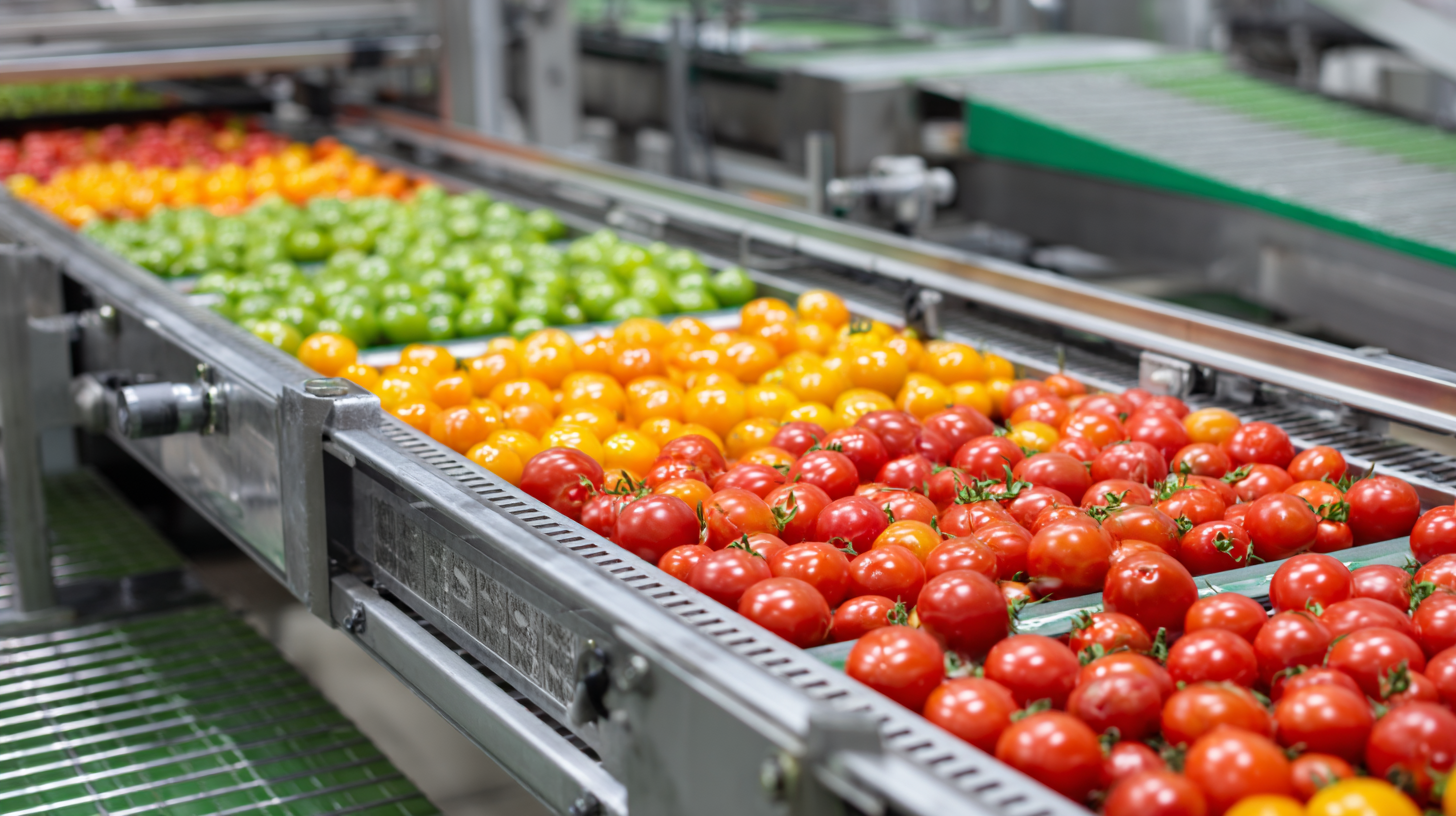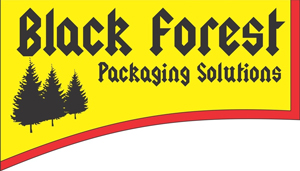Exploring Innovative Alternatives in Produce Packaging Machinery Solutions
In an era where sustainability and efficiency in food production are paramount, exploring innovative alternatives in produce packaging machinery is crucial for vendors aspiring to meet consumer demand and environmental standards. The traditional methods of packaging often lead to excessive waste and spoilage, prompting a significant shift towards advanced machinery that not only enhances the shelf life of fresh produce but also minimizes ecological impact. This blog aims to delve into various "how to" strategies for leveraging cutting-edge produce packaging machinery solutions that streamline operations, improve product visibility, and reduce carbon footprints.

By examining the latest technological advancements and best practices, businesses can transform their packaging processes and contribute to a more sustainable future in the produce industry.
Importance of Sustainable Packaging in the Produce Industry
The produce industry plays a vital role in global food supply, and with this significance comes the growing responsibility to adopt sustainable packaging practices. As consumers become increasingly aware of environmental issues, the demand for eco-friendly solutions creates both challenges and opportunities for businesses. Sustainable packaging not only minimizes waste but also helps to preserve the freshness and quality of fruits and vegetables, making it a crucial consideration for producers.
Innovative alternatives in produce packaging machinery have emerged to address these sustainability goals. Options like biodegradable films, reusable containers, and compostable materials are leading the way in reducing plastic usage.
These advances not only mitigate environmental impact but also appeal to eco-conscious consumers, who often prefer brands that prioritize sustainability. As producers invest in new machinery solutions, they enhance their marketability and contribute to a circular economy, ensuring that packaging contributes to, rather than detracts from, the health of our planet.
Key Features to Look for in Modern Produce Packaging Machinery
In today's rapidly evolving market, choosing the right features for modern produce packaging machinery is crucial for businesses aiming to enhance their operational efficiency and sustainability. As the global low-density polyethylene packaging market is projected to grow from $22.07 billion in 2025 to $29.69 billion by 2032, with a compound annual growth rate (CAGR) of 4.33%, companies must prioritize innovations that meet this demand. Key features to consider include eco-friendly materials, automation capabilities, and integration with smart technologies to streamline production processes.

Moreover, the bio-based packaging materials market offers significant insights, with a forecasted growth from $172.35 billion in 2025 to $214.95 billion by 2033, reflecting a CAGR of 2.8%. This growth underscores the increasing preference for sustainable and biodegradable packaging solutions. Modern produce packaging machinery should therefore incorporate materials that are not only efficient but also environmentally conscious, allowing companies to align with global sustainability goals while appealing to eco-minded consumers. Investing in packaging technology that accommodates these features will be vital in maintaining a competitive edge in the industry.
Innovative Technologies Transforming Produce Packaging Solutions
The produce packaging industry is undergoing a remarkable transformation, driven by innovative technologies that enhance efficiency and sustainability. Among these advancements, automation stands out as a game-changer. Automated packaging systems not only streamline processes but also minimize labor costs and human error. By leveraging robotics and artificial intelligence, producers can achieve higher throughput while maintaining product quality. This shift towards automation allows businesses to respond quickly to market demands, reducing packaging time significantly.
Another key innovation is the development of eco-friendly materials and smart packaging solutions. As consumers increasingly prioritize sustainability, packaging machinery has evolved to support the use of biodegradable and recyclable materials. Advances in biodegradable films and compostable materials ensure that produce can be packaged without compromising environmental integrity. Additionally, smart packaging technologies, utilizing QR codes and sensors, offer consumers enhanced information about freshness and origin, making it easier for them to make informed choices. This synergy of sustainability and technology not only benefits the environment but also elevates the consumer experience in the produce sector.
Exploring Innovative Alternatives in Produce Packaging Machinery Solutions
| Technology Type | Key Features | Benefits | Industry Impact | Sustainability Aspect |
|---|---|---|---|---|
| Vacuum Packaging | Removes air to increase shelf life | Reduces spoilage | Widely adopted in fresh produce | Uses less plastic |
| Biodegradable Packaging | Composed of natural materials | Environmentally friendly | Gaining popularity in eco-conscious markets | Fully compostable |
| Modified Atmosphere Packaging (MAP) | Adjusts gas composition around produce | Extends freshness | Improves transport efficiency | Reduces food waste |
| Smart Packaging | Includes sensors for freshness | Increases consumer trust | Encourages safe consumption | Supports sustainable practices |
| Edible Packaging | Made from food-grade materials | Reduces waste | Novelty for consumers | Completely waste-free |
Evaluating Cost-Effectiveness of Alternative Packaging Systems
In the face of escalating environmental concerns and rising production costs, the food packaging industry is actively seeking cost-effective alternatives to traditional produce packaging. According to a recent report by Smithers Pira, the global market for sustainable packaging is expected to reach $400 billion by 2026, driven by consumer demand for environmentally friendly solutions. Alternative packaging systems, such as biodegradable films and reusable containers, not only reduce waste but also offer significant long-term savings for producers.
Evaluating the cost-effectiveness of these alternative packaging solutions reveals promising potential. For instance, companies implementing compostable materials have reported up to a 30% reduction in packaging costs over time, primarily due to the decreased reliance on virgin plastics and the benefits of reduced landfill fees. Furthermore, research from the Food Packaging Forum indicates that switching to reusable packaging can cut operational costs by 40% in some sectors, showcasing a compelling fiscal incentive for businesses to transition towards more innovative packaging methods. The strategic adoption of these practices can enhance profitability while meeting consumer expectations and regulatory mandates.

Best Practices for Implementing New Packaging Machinery in Operations
Implementing new packaging machinery in produce operations is a critical step towards enhancing efficiency and sustainability. One of the best practices is to conduct a thorough assessment of the current packaging process. By identifying bottlenecks and areas for improvement, businesses can tailor new machinery to fit their specific needs. Engaging with employees during this phase is crucial, as they can provide valuable insights into the day-to-day challenges they face, ensuring that the new solutions are user-friendly and effective.
Another important aspect of integrating new machinery is training and support. Proper training sessions should be organized to equip staff with the necessary skills to operate and maintain the new equipment. This investment in personnel not only boosts productivity but also minimizes the risk of errors that can lead to wasted resources or product spoilage. Additionally, establishing ongoing support and feedback mechanisms will help in troubleshooting issues and optimizing the machinery for continuous improvement, ensuring that the business remains agile in adapting to changing market demands.
